What Is IFTTT: Getting to Know No-Code in 2025
IFTTT is one of the best no-code automation apps out there. It’s easy to use, reasonably priced and is a great time-saver all around. Join us as we go over what exactly IFTTT is and how you can use it.
Chances are you currently have two or more apps you regularly use that you wish could work together to save you some time, like having a smart home thermostat switch itself on when it gets cold outside, or have an article posted to Twitter when you move a relevant card in Trello. The easiest way to set up an automation like this is by using a tool like IFTTT.
Key Takeaways:
- IFTTT is a great, streamlined tool that can automate all kinds of processes, from social media (like Twitter and Facebook) to office applications (like spreadsheets and accounting).
- It’s available on most devices, like PCs and Macs, and has mobile apps for iOS and Android.
- IFTTT is very easy to use, and requires almost no effort on your part to set up. You should, however, exercise caution when linking apps together as this can, in some cases, create privacy issues.
Though setting up shortcuts like we describe isn’t anything new — geeks have been putting them together in so-called scripts for as long as we’ve had computers — what makes programs like IFTTT so revolutionary is that they require absolutely no coding knowledge on your part.
This makes these “no-code” solutions a great asset for anybody who likes to streamline processes but doesn’t have the chops to throw together a script. Below, our project management experts will go over an example of setting up one of them; if you’re more interested in IFTTT alternatives, we also have a guide to Zapier and an article comparing Zapier vs IFTTT.
What Is IFTTT?
In short, IFTTT is an automation tool that requires no coding knowledge. All you need to do is sign up, choose a plan (there is a free version as well as a really cheap paid one; see our pricing table below for the details) and you can get started.
You can’t automate just anything, though: the apps you want to connect need to be on the IFTTT list. Thankfully, however, the list is just massive, with thousands of options, from project management tools to cloud storage providers to apps so obscure we doubt anybody besides some die-hards have heard of them.
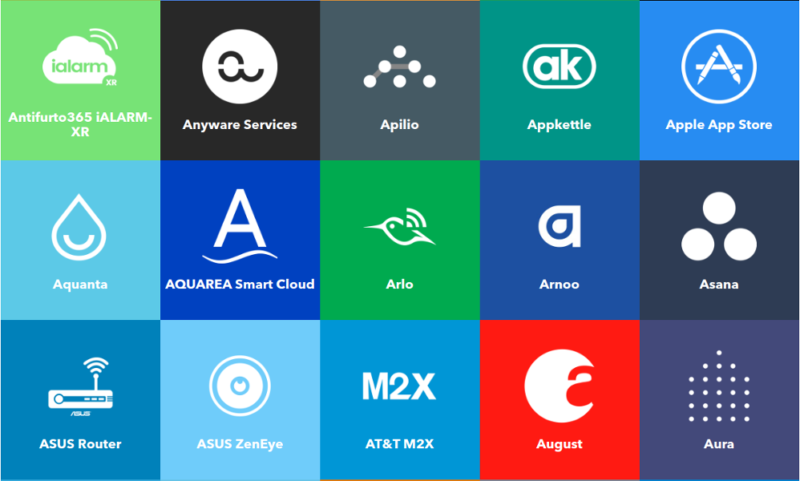
IFTTT works through simple mouse clicks, meaning you won’t need to know any code, though some knowledge of how the apps you want to connect to each other work will be handy. In some cases, you will need to get special administrator access to be allowed to link up one app to another.
The History of IFTTT
“If This Then That,” which was very quickly abbreviated into IFTTT, was started in 2010, beating Zapier by about a year. The co-founders are Alexander and Linden Tibbets, Jesse Tan and Scott Tong.
Though IFTTT started out rather simply, with only a few apps being able to link to each other, over the past decade its abilities have grown exponentially, making it into an automation powerhouse.
How Does “If This Then That” Work?
If This Then That works by connecting a trigger from an app to an action that will be performed. Although these automations, which IFTTT calls an “applet,” can get a little more complicated than that, this is, in essence, how IFTTT works.
You don’t need any coding knowledge, or even need to know exactly how a program works. Just click the trigger and action you want, and you’re off to the races.
Getting Started With IFTTT
Using IFTTT is really easy: just go to the website and sign up — all you need to enter is your email address. This will give you access to the free plan, which lets you create up to three applets. Once you’ve set up your account, you can get started with IFTTT.
For this example, we’re going to set up an applet that creates an entry in a Google Sheet every time a new payment is received in Stripe, a payment provider.
- Create Your Applet
In IFTTT, click on the “create” button in the top-right corner of the screen.
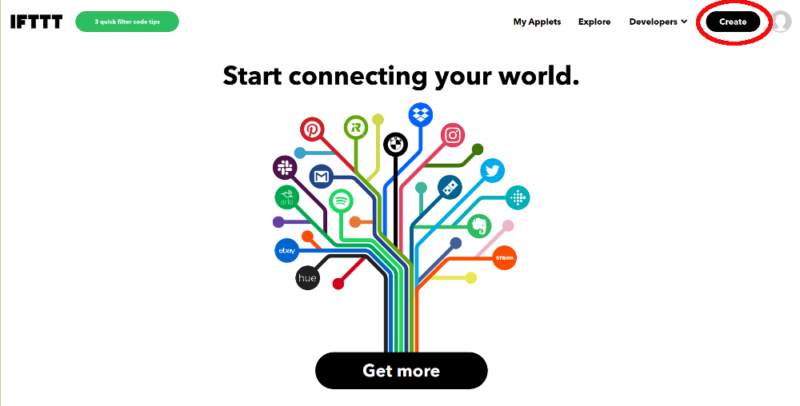
- Add a Trigger
This brings you to a screen where you can choose your trigger and action. Without a trigger selected, you can’t pick an action, so let’s do that first.
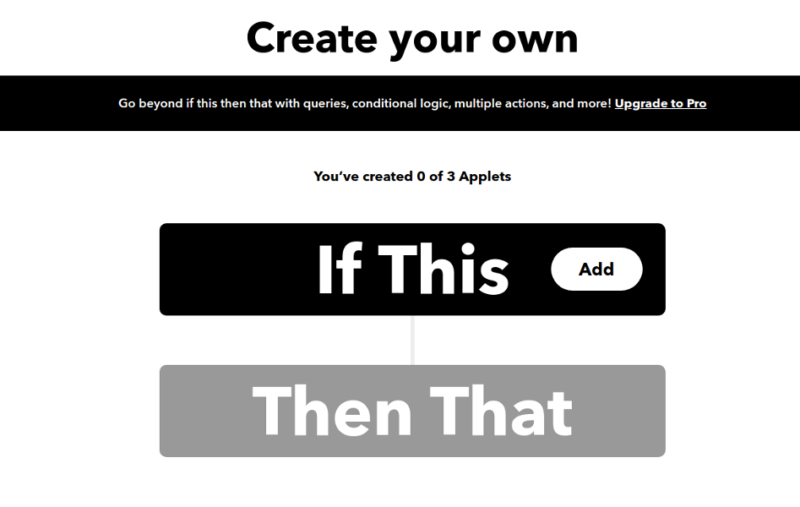
- Search for Your Trigger App
Next, you’ll be presented with an absolutely massive list of apps to choose your trigger from. Unless your app starts with “A,” don’t bother scrolling or your hand will get tired. Use the search bar instead.
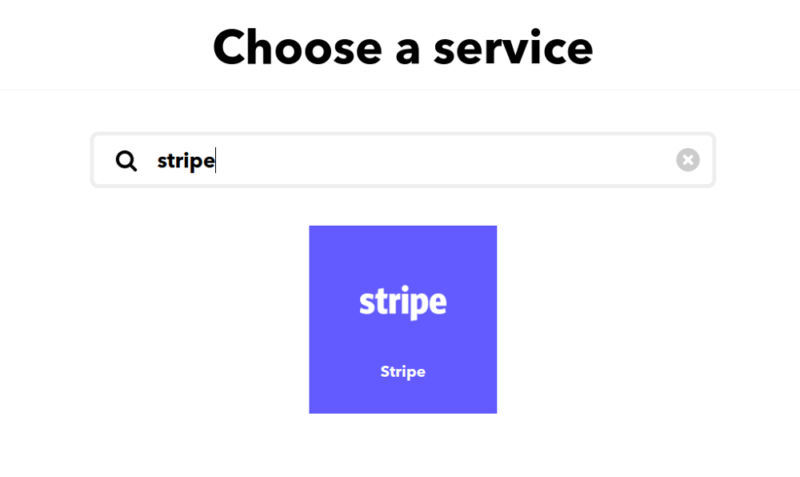
- Select a Trigger
Pick the app you want the trigger to fire from, and click on it to see a list of available triggers. Note that the list can be quite limited depending on the app you want to connect to.
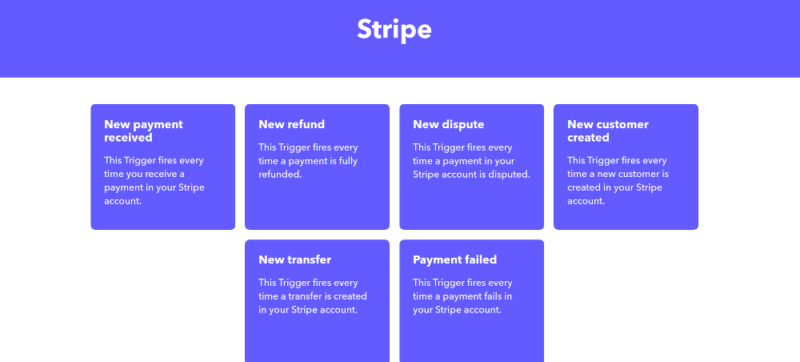
- Connect the App
Next up is a big blue screen that will give you some information about the app with a massive “connect” button. Read all about the app you’re already using if you want, then hit the button.
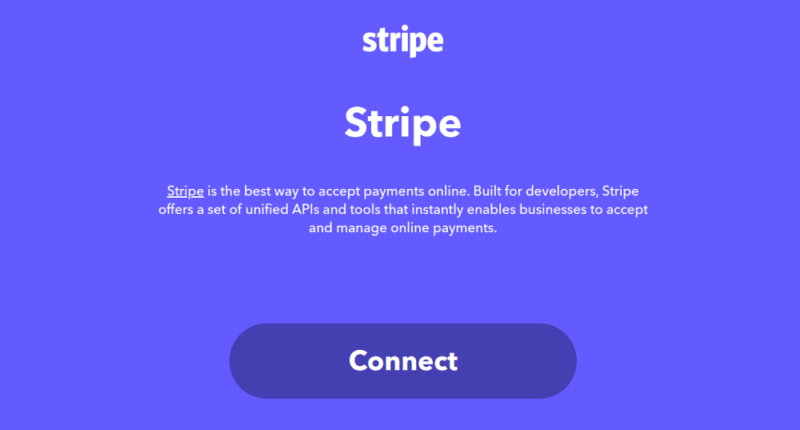
- Give IFTTT Access
Now something weird will happen as IFTTT opens a new browser window. Don’t be alarmed — this is how you’ll give permission to IFTTT to go into your Stripe account for the information it needs. Fill out your account details (a password manager comes in handy here), and that’s it for setting up the trigger.
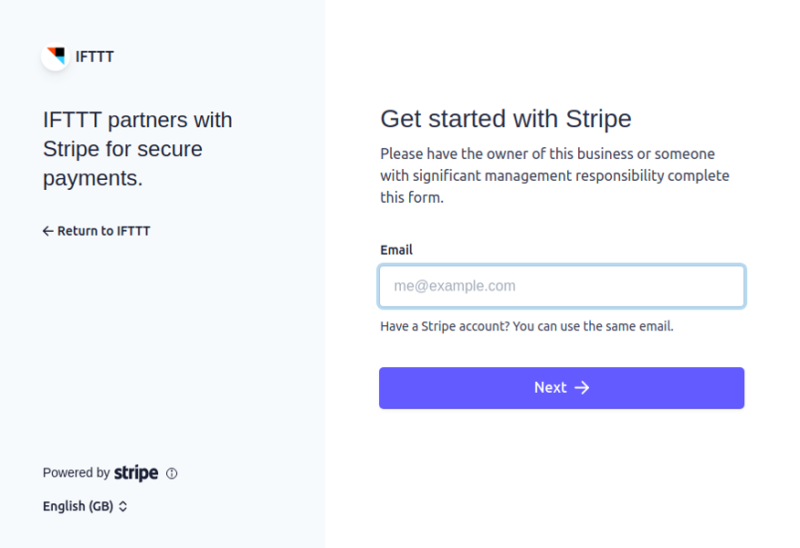
- Add an Action
Once the trigger is sorted, you’ll be sent back to the Stripe “create” screen, where the trigger is now blue rather than black. The action bar is now black, meaning we can select it and set up what we want our trigger to set in motion.
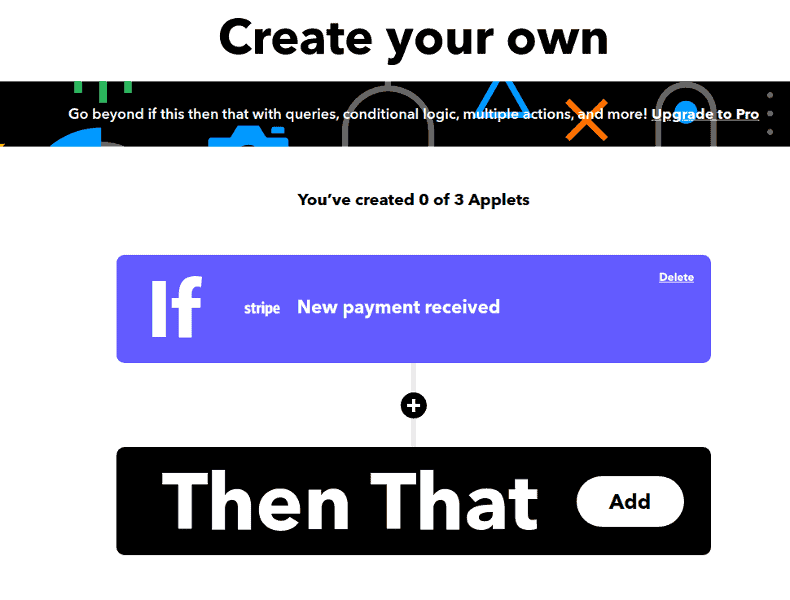
- Select Your Action App
As we want a nice spreadsheet with all our Stripe payments, we’ll select Google Sheets for our action.
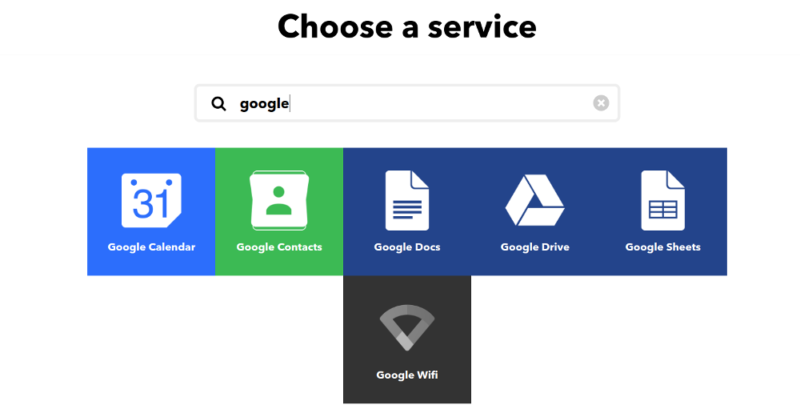
- Select the Action
IFTTT doesn’t provide too many actions for Google Sheets — only two. We’ll pick “add row to spreadsheet” as that’s the most straightforward one.
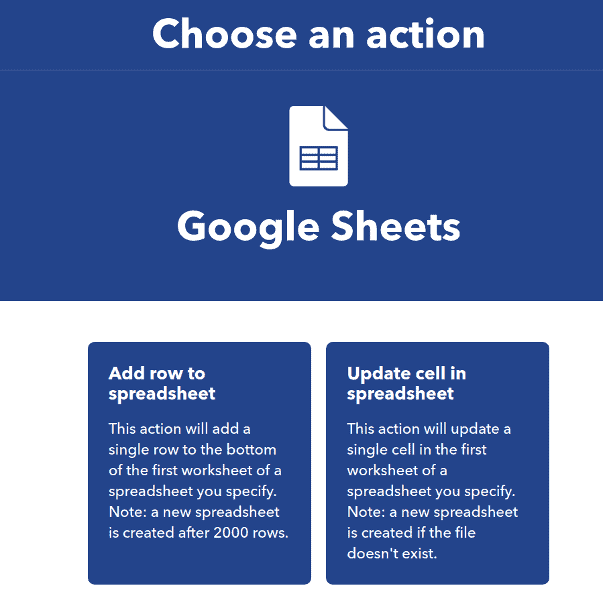
- Connect the Action App
You’ll be brought to the big, blue screen so you can hit the “connect” button. Another new browser window will open — in this case it’s Google’s — so you can connect your Google account to IFTTT.
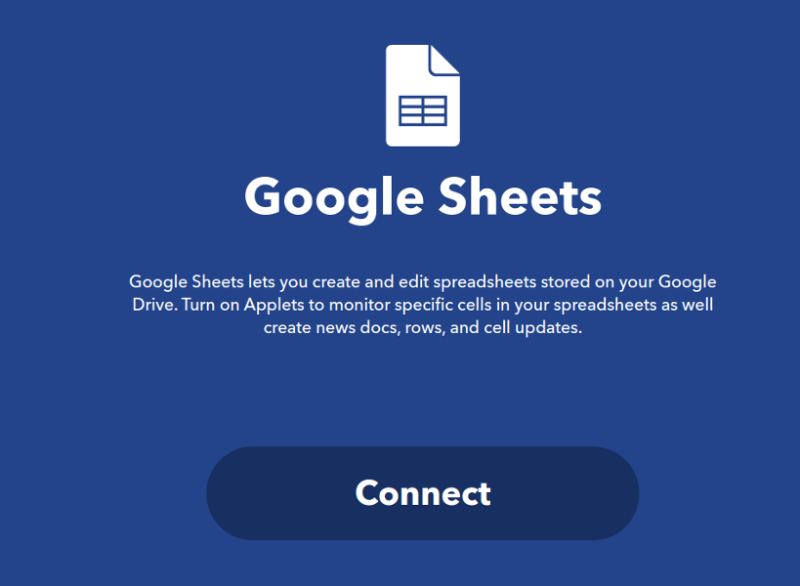
- Review Action Specifications
This is the only real tricky part of setting up applets: each action comes with some specifications all its own, depending on the app they’re created in. In the case of Sheets, it’s the name of the sheet, the criteria of the rows and the folder path. The picture below shows the defaults.
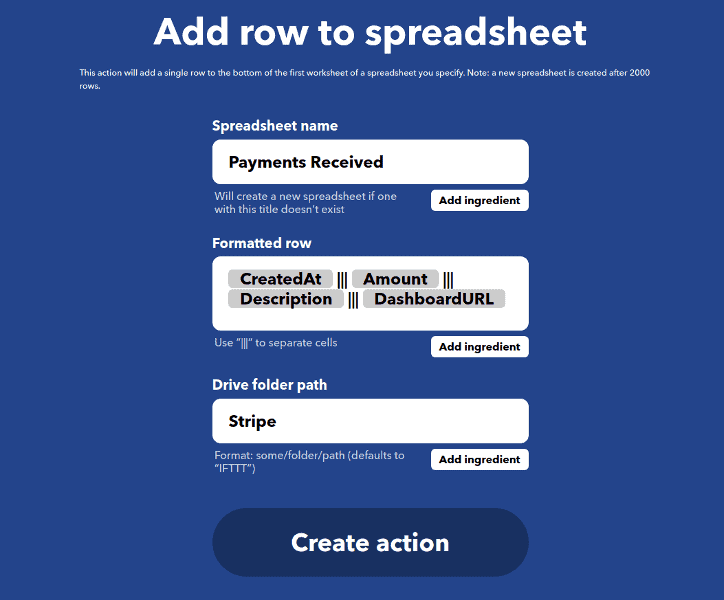
- Add New Criteria if Needed
You can add new criteria using “ingredients,” which are a set of predetermined values for each app. For example, under “formatted row,” each available ingredient is selected so you can see where the payment came from, the description and how much it was (kinda handy, that last one). You can mess with these to your heart’s content; in the end, all we changed was the name of the sheet.
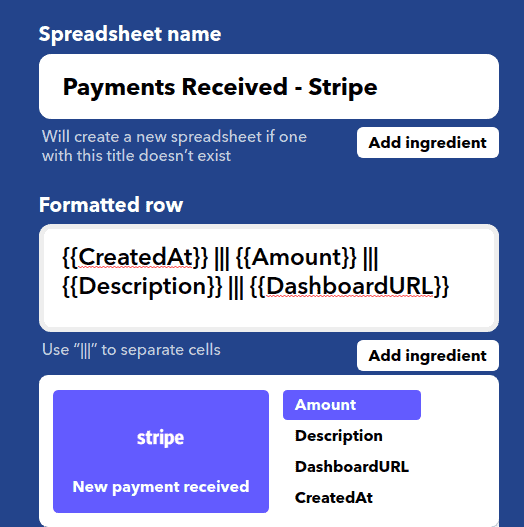
- Finish the Setup
Click “connect” and you’ll be brought back to the “create” screen once more, where both the trigger and the action are now colored. If you wanted an applet with multiple actions (sending an email as well as filling out the sheet, for example), this is where you’d add another trigger. In our case, though, we’ll just hit “continue.”
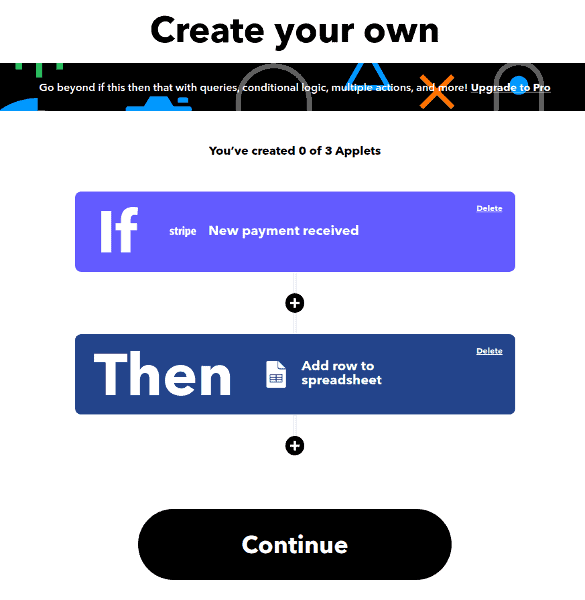
- Give Your Applet a Name
All that remains is to give your applet a snazzy title — the suggested ones are usually no good — and you’re all done. Just hit “finish.”
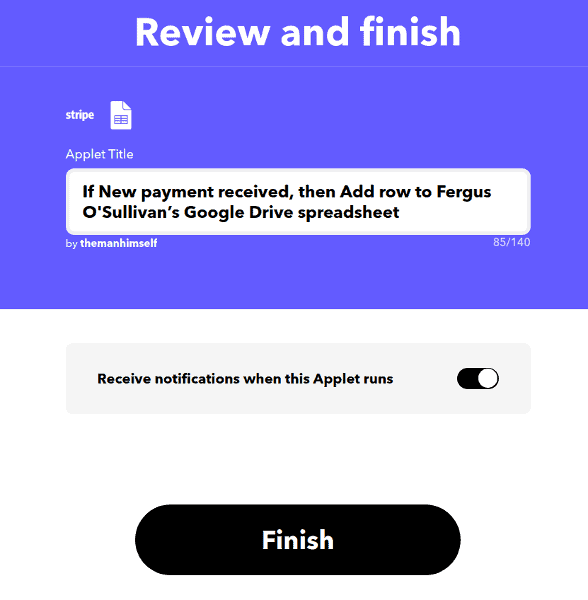
- Manage Your Applet
The applet will now show up as a summary under the “my applets” tab in your IFTTT account. Here, you can switch it on or off, choose to receive notifications regarding the applet, as well as see a summary of what it does. You can also archive it if you no longer need it.
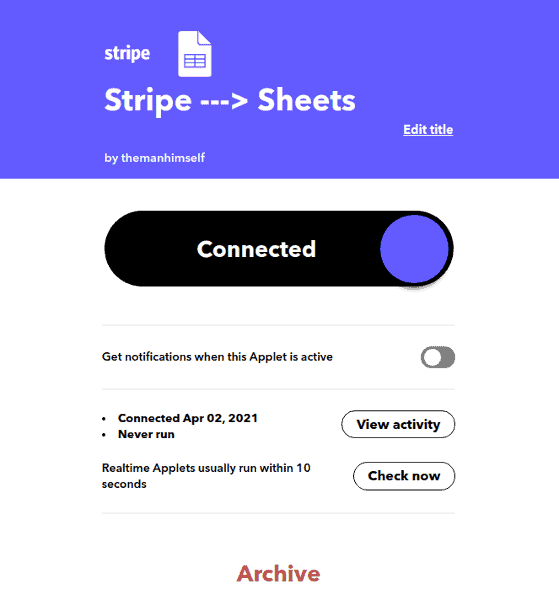
This is how you set up an IFTTT applet in a nutshell. Multistep applets as well as apps with more options will complicate the above steps a little, but its underlying principles won’t change much, if at all.
IFTTT Plans and Pricing
IFTTT has the simplest pricing scheme we’ve seen among no-code solutions. For individual users it has just two versions: one free and one paid, while developers get their own set of plans.
We’ll leave these advanced plans out of our discussion as they’re a little out of the bailiwick of our regular audience, though if you’d like to know more you should check out IFTTT’s pricing page.
| Plans: | Price: | Notes: |
|---|---|---|
| IFTTT Standard | Free | Create up to 3 applets of your own Unlimited use of other applets |
| IFTTT Pro | $3.99 per month | Unlimited applet creation Multistep applets Faster response times for certain applets Customer support |
Overall, we really like IFTTT’s pricing structure. The free plan may only allow three applets of your own, but you can use other people’s as much as you want, making it a lot more flexible than it appears at first. If you need more than three applets, the upgrade is pretty cheap, too.
The paid plan beats Zapier by a country mile: IFTTT costs four bucks per month for unlimited applets, while Zapier charges you $60 for the same privilege. That $4 also gets you multistep IFTTT applets and faster response times, making it a pretty good buy.
However, as we discuss a little farther down in this article, there’s a tradeoff. IFTTT integrates fewer apps than Zapier does, and there are fewer triggers and actions for each. As such, choosing between the two should be about more than dollars and cents. That said, if IFTTT is enough for you, the choice is a no-brainer.
Security and Privacy: Is IFTTT Safe?
As far as we can tell, IFTTT is completely safe to use. The company does not share data with third parties, and it doesn’t have security issues with its accounts. However, its applets may be a different story.
This FTC report states that some applets (still called “recipes” at time of writing) may create security issues, inadvertently or not. One example is how a private picture on your phone can be sent directly to a public sharing site like Flickr. Another good example is an applet that creates a new post on Facebook every time you’re tagged in a photo, which could lead to some compromising situations.
Though these examples may seem like they’re in the realm of common sense, at no point does IFTTT warn you of the possible implications, meaning that the privacy and security of your images and documents is entirely in your hands.
As such, the FTC recommends (we do, too, but we’re not a government agency) that users remain cautious as to which programs they let access what, especially when it comes to social media.
Competitors: How Could IFTTT Be Better?
IFTTT is a little more limited than its main competitors, offering fewer apps to choose from, and fewer actions. Zapier, for example, can do a lot more in Sheets than just create new rows and cells.
However, IFTTT seems a lot more dependable. While it offers fewer options per app, the options it does have seem to work a lot better, without the occasional glitches of Zapier. As we mentioned in our pricing section above, the price difference is also a big draw.
The two biggest competitors that we recommend considering are Zapier and Make (formerly called Integromat) and you can see how those two compare in our Make vs Zapier article.
Overall, our advice is to check out the free plans of any no-code services you like and decide based on those whether or not to start paying. Also, you could go the whole hog and learn how to put together some simple Python scripts.
Final Thoughts
IFTTT is one of the most easy-to-use automation tools out there, and, as you could see in our example, needs no coding knowledge to get it started. We really like it and recommend it to anybody that wants to link up social media accounts or automate work processes; it can do both equally well.
What are your thoughts on IFTTT? Useful or useless? Let us know in the comments below and, as always, thank you for reading.
FAQ
IFTTT is used to connect two or more apps to each other, automating their functions and saving you time and effort. You can use it for business purposes, or even just to connect your Facebook account to your email, or import Twitter images straight to your photo storage.
IFTTT has an excellent free plan that allows for the creation of up to three applets. The upgrade costs just $4, and allows for unlimited applets. Overall, it’s a steal.
Yes, IFTTT is trustworthy, though some applets may create security or privacy issues. You should always be cautious when connecting two apps together.

